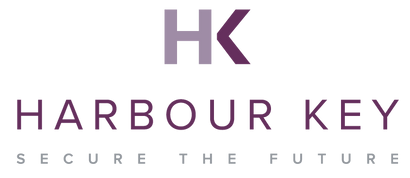
This month, in our third article supporting businesses and individuals in these testing economic times, we look at cost saving tips or opportunities and assistance.
As a reminder, our first article in this series provided advice on being successful in achieving grant funding to aid cashflow for projects and the second covered meeting the workforce challenge.
The starting position, if the exercise has not been undertaken already, is to review expenditure, business and personal. It may be possible to identify expenditure that is no longer relevant to the business or would not be missed if cut. Alternatively, can the service or product be acquired at a cheaper price from another supplier. There are a number of website tools and platforms that can assist with this exercise.
In addition to savings, most business service providers operating in competitive industries offer discounts or benefits to new customers. For example, many insurance companies offer discounts or bonuses to customers who change provider.
Many businesses see overhead expenses, such as rent, utilities, and office supplies, as basically non-negotiable. Accordingly, these areas are ignored in favour of expenses that occupy more “mental” attention and, perhaps, have more effect on the bottom line, such as labour. Targeted overhead expense reductions, like passive energy-saving measures, can result in significant cost savings.
Use a Programmable or Smart Thermostat
Heating and air conditioning aren’t negotiable expenses i.e., you cannot turn them off, as this can adversely impact employees’ productivity and potentially break health and safety regulations. However, you can save money by programmable and smart thermostat,s customising your control schedule to match when the systems are used.
Use Passive Energy-Saving Measures
Complement your programmable or smart thermostat with passive energy-saving measures that reduce your climate control and lighting systems’ requirements, for example double glazing, light blocking blinds or curtains, fitting tight seals or weatherstrip at common heat loss points etc.
Energy-Efficiency Audit
Before you start an energy-saving project, get an energy-efficiency audit to identify the areas of greatest need, then determine whether any work qualifies for any local or state funding, as part of any environmental project.
Power Down Non-essential Lights, Appliances & Machinery After Hours
How many appliances are left on standby or even on overnight? Get into the habit and get your team into the habit of powering down those items which are not required to be on overnight.
Align Plan Costs With Usage
As a minimum, you should review your essential services for example telecommunications, cloud storage, bookkeeping etc., at least annually, to see if can be provided more cheaply by another supplier, or will the current provider give a discount if paid annually, as opposed to monthly.
Also check if you’re paying for capacity that you don’t need or use regularly, such that you are able to downsize to a cheaper plan without hurting your business. Conversely, if you’re routinely exceeding the limits of a lower-capacity plan, you could be paying a lot to run over those limits. Upsizing to a more generous, higher-capacity plan might result in a higher monthly fee, but it could save you in the long run.
Use Space More Efficiently or Downsize Your Business Space
When your office lease is next up for renewal, carefully consider your space needs and consider downsizing to a smaller space or switching to a more flexible co-working space, if this would work for your business, taking into account that you may have introduced homeworking or a hybrid working model.
Update Legacy Systems
How many legacy technologies your business uses depends on what your company does and how much you’ve invested in upgrades to date. To some extent, the ability to address the problem of costly, underperforming legacy systems also depends on what your company does and how much it can afford to spend on modernisation.
Modernisation can save on repair and service costs, as well as potentially improve productivity. There is a capital cost to the replacement, unless leased, however there is the current 130% super tax deduction for qualifying capital expenditure, see our article.
You don’t have to buy new as more modern, gently used second hand items may be an option and, although the super tax deduction may not be available, other capital allowances are likely to apply.
Pay Supplier Invoices Early
Early payment may result in a discount, and looking after your suppliers, may result in them giving you some leeway when you may need some time to pay.
As long as paying early doesn’t negatively impact your cash flow, it usually makes financial sense to do so. Late payment is likely to result in late payment interest, at a time when interest costs are rising.
Credit Cards with Benefits
If your credit is good enough, consider a credit card to cover costs that you would purchase anyway, as with the right type of card it can result in other benefits. The best business cards reliably return 1.5% to 2% on spending, either in the form of cash back or miles that can be used toward free travel. As long as you pay your balance in full each month and only use your card for purchases that you would have made anyway, there should be no issues.
Trade Association Membership
Although a membership cost, many associations offer competitive discounts for members with service providers. For example, The Federation of Small Business membership, entitles the member to free tax investigations fee insurance, PI insurance discount and a legal telephone helpline service, as well as many others.
Avoid Leverage and Interest Charges Wherever Possible
Making payments on time whether supplier, loan and tax payments means no late payment interest, a cost that can be avoided, at a time when interest costs are increasing monthly.
Taxes
Make sure you have system and processes in place to report and pay your taxes on time, to avoid interest charges and penalties, which arise for both late payment and late filing. In addition, make use of tax reliefs, to minimise tax liabilities and potentially claim a repayment, for example the research & development tax credit claims.
Pool Resources With Other Small Businesses
When it comes to buying supplies, inventory, and equipment, there is strength in numbers. Is there any opportunity to reduce recurring costs by pooling resources with other businesses? For example, can shipping container costs and fees be shared?
Tax Free Childcare – You may eligible for Government tax free childcare, where you can get up to £500 every 3 months (up to £2,000 a year), for each of your children to help with the costs of childcare. This goes up to £1,000 every 3 months if a child is disabled (up to £4,000 a year). You can use it to pay for approved childcare, for example:
- childminders, nurseries and nannies;
- after school clubs and play schemes.
More information can be found HERE.
There are many ways to cut costs, the above being only a few to start you thinking. A company can customize their cost saving plan by selecting the right methods for them, managing resources well, minimizing waste and avoiding new expenses. In addition, to achieving cost savings, greater efficiency can boost a company's profits and even decrease environmental impact and a review of working practices, which may not result in a cost saving, could still increase profits.
We would welcome any thoughts or ideas you have, which we could share with our clients.



